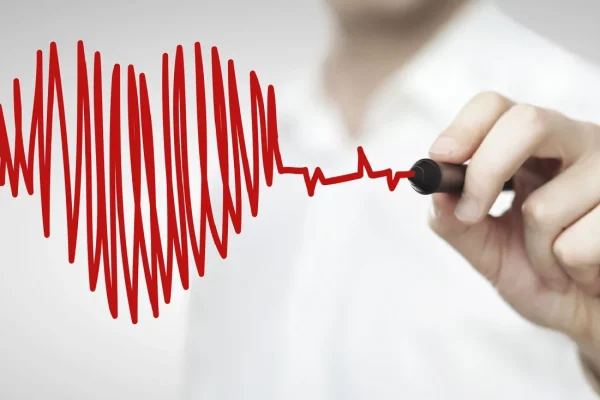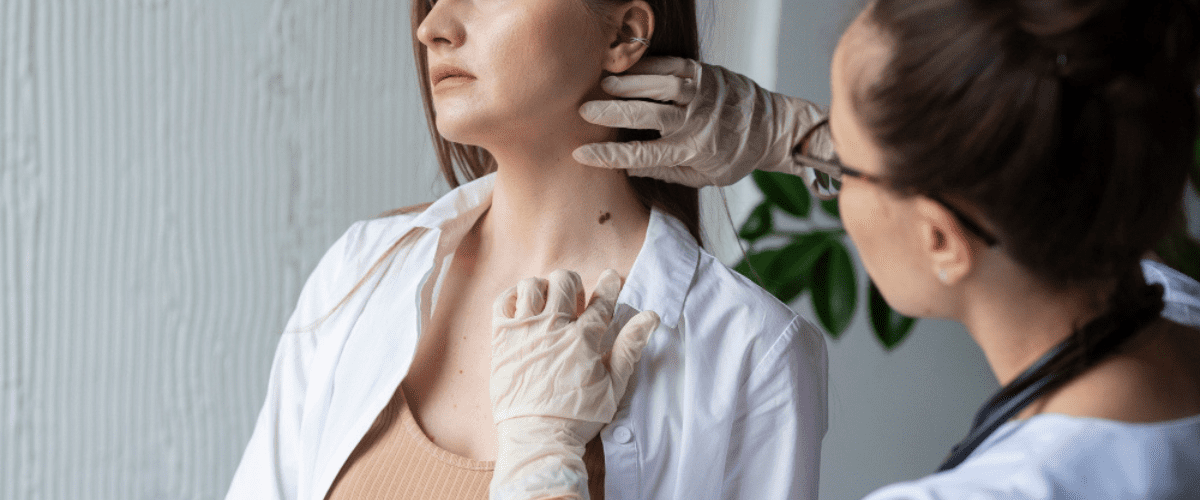
15 Oct Early Detection, Early Action: The Importance of Skin Cancer Screenings
Early Detection, Early Action: The Importance of Skin Cancer Screenings
By Island Hospital | October 14, 2024 12:00:00 PM
Medical Reviewer: Dr. Tang Weng Heng, Clinical Oncologist
Skin cancer is one of the most prevalent cancers worldwide, alongside lung, breast, and colon cancer.
Although it frequently occurs in sun-exposed areas, it can also develop in covered body parts.
Early detection through skin biopsy or other medical tests, as well as treatment, can significantly improve survival rates for skin cancer.
This allows you to recognize the potential cases better and seek prompt medical attention once you have familiarised yourself with the basics of the disease.
Let us explore the early signs of skin cancer, early detection measures, and the vital treatment needed for you.
What is Skin Cancer?
Skin cancer develops on sun-exposed areas like the arms, legs, face, and scalp, but it can also occur on covered parts of the body, including the genitals and areas under the nails.
Causes of Skin Cancer
The primary cause of skin cancer is excessive exposure to ultraviolet (UV) radiation from the sun or artificial sources like tanning beds.
This exposure damages DNA in skin cells, leading to uncontrolled growth and division.
However, other factors can also influence your risk of skin cancer, even in areas not directly exposed to sunlight.
Types of Skin Cancer
There are several types of skin cancer, but the three main types are:
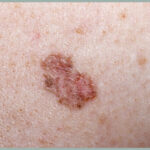 | It usually appears as a raised, pearly bump or a flat, scaly patch. Usually occurs in sun-exposed areas of the skin. | The most common type of skin cancer. | Unlikely to spread when treated early. |
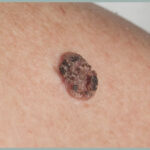 | It usually appears as a firm, red nodule or a scaly patch. Usually occurs in sun-exposed areas of the skin. | Less common than basal cell carcinoma | Unlikely to spread when treated early. |
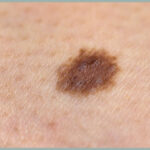 | It usually appears as a mole that changes in size, shape, or colour. Can develop anywhere in a person’s body. In men: face or the trunk. In women: the lower region or the legs | The most dangerous and uncommon type of skin cancer. | Highly aggressive and can spread to other parts of the body if not treated early |
Signs and Symptoms
Skin cancer often manifests as changes in your skin, such as new growths or alterations in existing moles. Common signs include:
- Pearly or waxy bumps on the face, ears, or neck.
- Flat, pink, red, or brown patches or bumps.
- Areas resembling scars.
- Sores that are crusty have a depressed centre or bleed frequently.
- Wounds or sores that fail to heal or recur after healing.
- Rough, scaly lesions that may itch, bleed, or become crusty.
- Suspicious moles with the “A-B-C-D-Es” of melanoma:
- Asymmetrical: The shape is not regular.
- Border: The edge is jagged.
- Colour: The colour is uneven.
- Diameter: The size is larger than a pea.
- Evolving: The mole or growth has changed in the past few weeks or months.
Expand your knowledge on skin biopsy and why early detection is important in this comprehensive guide.
Stages and Grades of Skin Cancer
The stage of skin cancer refers to the size of the tumour, whether it has spread to nearby lymph nodes or other organs, and the patient’s overall health.
These classifications help your doctor decide which treatment you need.
|
|
|
|
|
|
|
|
|
The grade of a cancer refers to how closely its cells resemble normal cells. This information helps doctors understand the cancer’s potential behaviour and determine appropriate treatment.
Cancer cell grades range from 1 to 3:
- Grade 1 (low grade): Cells appear most like normal cells.
- Grade 2: Cells exhibit some resemblance to normal cells.
- Grade 3 (high grade): Cells appear highly abnormal and deviate significantly from normal cells.
Risk Factors
Factors that may increase your risk of skin cancer are:
- Fair skin
While it is true that anyone can get skin cancer regardless of skin colour, individuals with fair skin have less melanin (pigment) in their skin which provides lesser protection from UV radiation. - Sunburns
Individuals who sunburn easily are also more likely to develop skin cancer than individuals with darker skin.The more sunburns a person has had, the greater their risk of skin cancer. - Sun exposure
Individuals exposed to the sun for long periods without adequate protection from sunscreen or clothing are also at risk of skin cancer.This is true for individuals who get tans or are exposed to tanning lamps/beds, as a tan is the skin’s response to excessive UV radiation. - Moles
People with many moles or abnormal moles are also at an increased risk of skin cancer because irregular moles are more likely to develop into cancerous lesions.A person with a history of abnormal moles will need to be vigilant and watch for any changes in their moles or skin. - A family history of skin cancer
If your parents or siblings have had skin cancer, then you may be at an increased risk as well. - A weakened immune system
People with weakened immune systems caused by diseases such as HIV/AIDS or by immunosuppressant drugs are more likely to develop skin cancer. - Radiation
If you have received radiation as a form of treatment, then you may also have an increased risk of skin cancer.
Diagnosis and Tests
A dermatologist will conduct a physical exam to assess your skin and look for any suspicious moles or lesions. If they suspect skin cancer, they may perform one or more of the following tests:
- Skin biopsy
A skin biopsy is the most common procedure used to diagnose skin cancer. It involves removing a small sample of tissue from the suspicious area for examination under a microscope - Imaging tests
To assess the extent of suspected skin cancer spread, imaging tests may be employed. These may include:
– CT scan
– MRI scan
– PET scan
– Lymphoscintigraphy - Additional Tests
To determine the stage of skin cancer or plan treatment, additional tests may be necessary in some cases:
– Blood tests
– Genetic testing
Early detection and diagnosis are crucial for successful treatment of skin cancer.
If you notice any changes in your skin, such as a new mole or a change in an existing mole, it is important to see a dermatologist for evaluation.
Early Detection Measures
Skin cancer is largely preventable. To reduce your risk, consider these protective measures:
- Avoid tanning beds
Tanning beds can increase your risk of skin cancer. - Check your skin regularly
Look for any new moles or changes in existing moles. - Limit sun exposure
Stay out of the sun during peak hours (10 a.m. to 4 p.m.). - See a dermatologist if you notice any changes
If you notice any changes in your skin, see a dermatologist for a skin exam. - See a dermatologist regularly: If you have a family history of skin cancer or other risk factors, see a dermatologist for regular skin exams.
- Wear sunscreen
Use a broad-spectrum sunscreen with an SPF of 30 or higher. - Wear protective clothing
Wear clothing that covers your skin, such as a hat, sunglasses, and long sleeves.
Explore the various types of allergic reactions and how allergy testing can help in the diagnosis and management of those allergies in our article.
Skin Cancer Treatments
Treatment options for skin cancer and pre-cancerous skin lesions vary depending on the type of lesion. These treatments include:
| Chemotherapy | This cancer treatment uses drugs to kill cancer cells. They are often administered intravenously (through a vein), but they can also be taken orally (by mouth) or applied topically (to the skin). | |
| Curettage | The doctor will use a spoon-shaped blade to remove the skin cells affected by cancer. This treatment is subsequently combined with electrosurgery or cryotherapy. | |
| Excision | Your doctor will cut out the cancerous skin tissue and some margin of healthy skin surrounding it. | |
| Freezing (Cryosurgery) | Early skin cancers and small lesions are frozen using liquid nitrogen. | |
| Moh’s surgery | The doctor will carefully remove cancerous skin layers using a microscope, ensuring complete removal of abnormal cells. | |
| Photodynamic therapy | This therapy involves using drugs to sensitise cancer cells to light, followed by the application of laser light to destroy the targeted cells. | |
| Radiotherapy | This therapy uses high-powered energy beams such as X-rays to kill the cancer cells. |
Living with Skin Cancer
Living with a skin cancer diagnosis can be challenging, but it is vital to remember that many people with skin cancer live long and fulfilling lives.
Here are some tips for coping with a skin cancer diagnosis:
1. Seek Support
- Talk to friends and family
Sharing your feelings with loved ones can be helpful. - Join a support group
Connecting with others who have experienced skin cancer can provide emotional support and practical advice. - Talk to a therapist
A therapist can help you manage stress and anxiety.
2. Follow Your Treatment Plan
- Adhere to your treatment plan
Following your doctor’s recommendations is crucial for successful treatment and a better prognosis. - Attend follow-up appointments
Regular check-ups can help monitor your progress and detect any early cancer recurrence.
3. Take Care of Yourself
- Eat a healthy diet
A balanced diet can help strengthen your immune system and promote overall health. - Exercise regularly
Physical activity can help reduce stress and improve your mood. - Get enough sleep
Aim for 7-9 hours of sleep each night. - Manage stress
Practise relaxation techniques like meditation or deep breathing.
Remember, living with skin cancer is a journey, and there are many resources available to help you navigate this challenge.
You can maintain a good quality of life with the proper support and care.
Early Detection Saves Lives: Protect Your Skin Now
Early detection of skin cancer is vital for successful treatment. Taking proactive measures now can significantly improve your skin health and potentially extend your lifespan.
At Island Hospital, our dedicated team of renowned oncologists and supportive staff are here for you every step of the way. We offer a personalised and comprehensive approach to cancer care and a healthy lifestyle for you.
Our commitment to excellence in advanced diagnostics to, cutting-edge therapies, and compassionate support has earned us local and worldwide recognition:
- A finalist for Malaysia’s Flagship Medical Tourism Hospital Programme
- A place on Newsweek’s lists of World’s Best Hospitals 2024
- A place Global Health Asia Pacific Awards 2024
Let us empower you in your fight against skin cancer and help you live your life to the fullest.
Schedule your appointment today to learn more about our treatment options to support you throughout your journey. Your path to recovery begins here.
FAQ
What does the start of skin cancer look like?
Skin cancer often begins as a change in existing skin or a new growth. After some time, you will face several signs and symptoms, such as a sore that does not heal or a changing mole.
It’s important to note that these are just some of the possible signs of skin cancer, and not all skin cancers will appear this way.
If you notice any changes in your skin, it’s important to see a dermatologist for evaluation.
Can you survive skin cancer?
Yes, many people survive skin cancer.
The survival rate for skin cancer depends on several factors, including the type of skin cancer, the cancer stage, and the treatment’s effectiveness.
The 5-year survival rate for skin cancer is generally high, especially when detected early. It can be as high as 99% before spreading to lymph nodes.
However, the rate decreases to 66% if the cancer has spread to nearby lymph nodes and 27% if it has spread to distant lymph nodes and other organs.
How fast does skin cancer spread, and can touch spread it?
The speed at which skin cancer spreads varies depending on the type and stage of the cancer.
Melanoma, the most severe type of skin cancer, is the most likely to spread. However, even basal cell carcinoma, the most common type of skin cancer, can spread in rare cases.
Skin cancer cannot be spread by touch as it is a type of cancer that begins in the skin cells. Therefore, it is not contagious.
What are some skin cancer myths?
Some of the many misconceptions about skin cancer include:
| 1. Only people with fair skin can get skin cancer. | |
| 2. Tanning beds are a safe alternative to sun exposure. | |
| 3. If I don't have a family history of skin cancer, I'm at low risk. | |
| 4. A tan indicates good health. | |
| 5. If a mole doesn't change, it's not cancerous. | |
| 6. Sunscreen with a high SPF offers complete protection. |
What happens if you pick skin cancer?
Picking at skin cancer can be harmful and should be avoided. Here’s why:
- Increased risk of spreading
Picking at a skin lesion can increase the risk of the cancer spreading to other parts of the body as your damaged skin creates a pathway for cancer cells to enter the bloodstream. - Delayed diagnosis
It will be difficult for a dermatologist to diagnose the cancer if you pick on it accurately. This can delay treatment and increase the risk of complications. - Increased risk of infection
Picking at a skin lesion can also increase your risk of an infection as it damages the skin and creates an opening for bacteria to enter.
Related Doctors
| Derived from | Complications |
|---|






